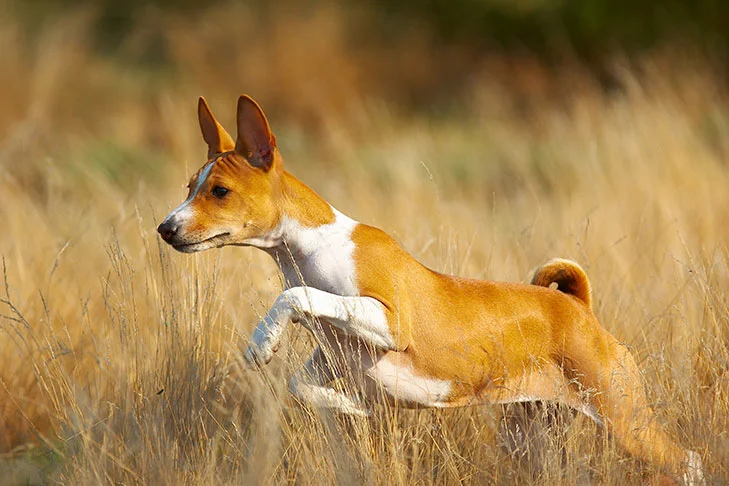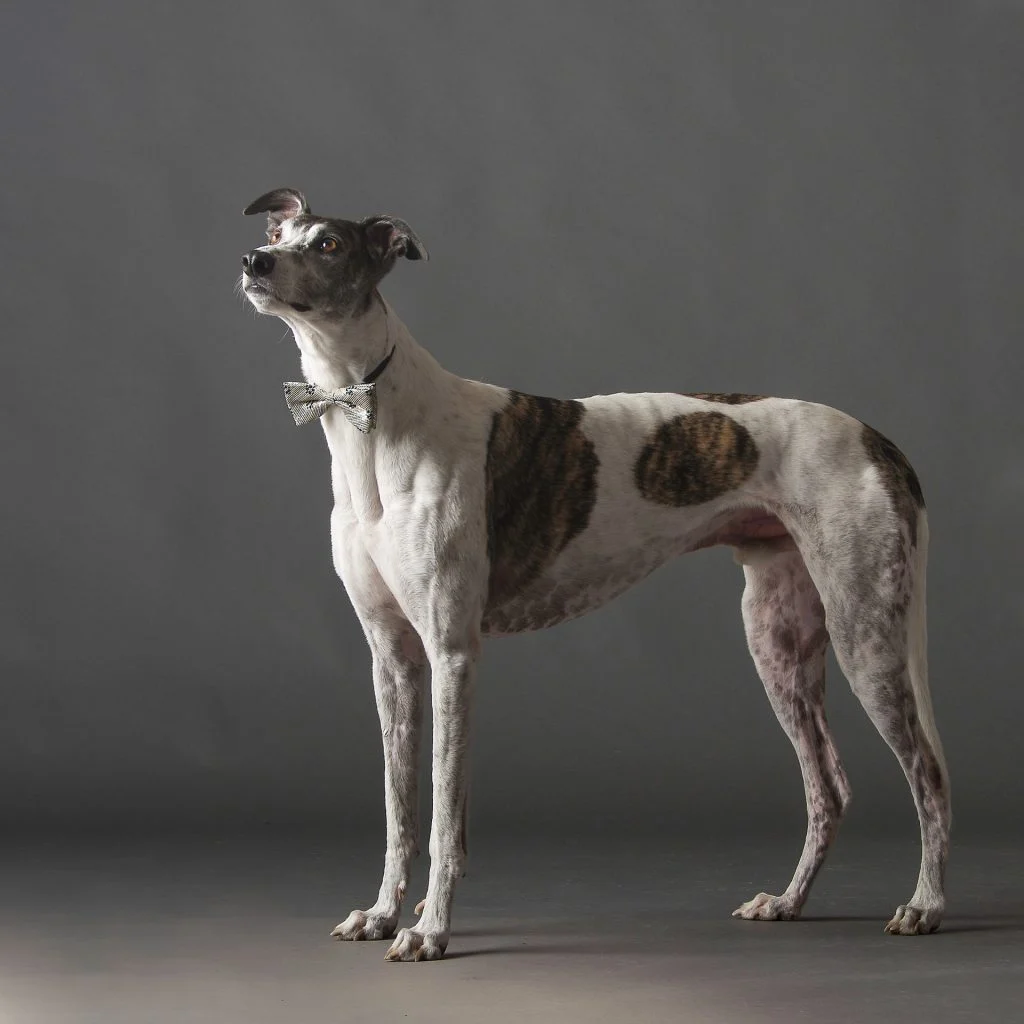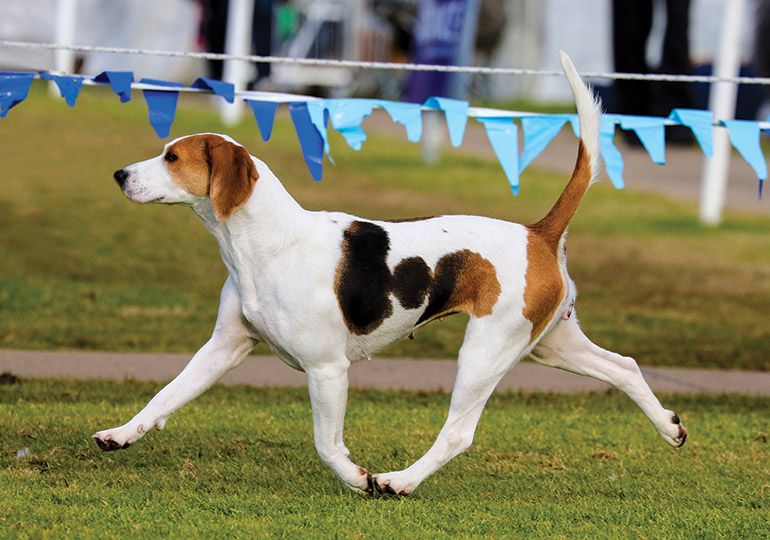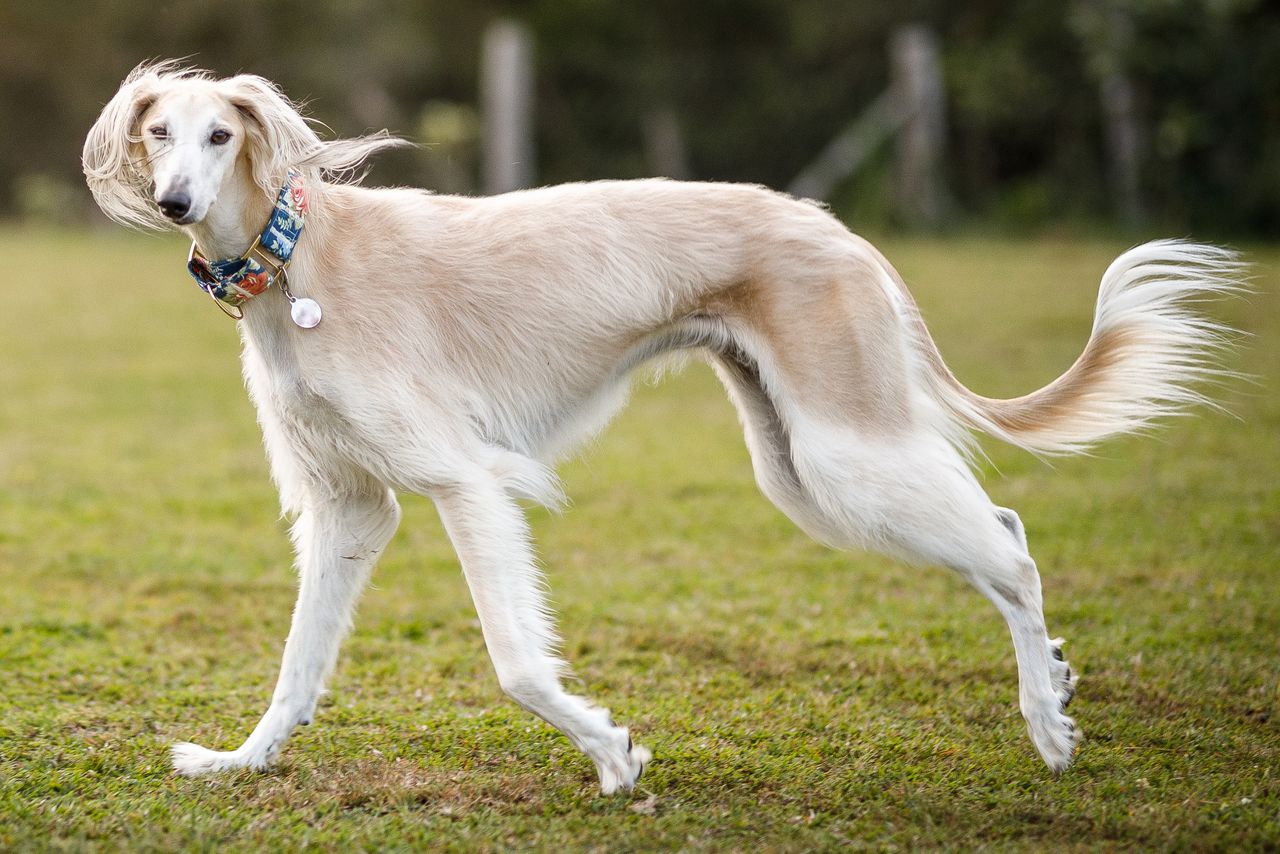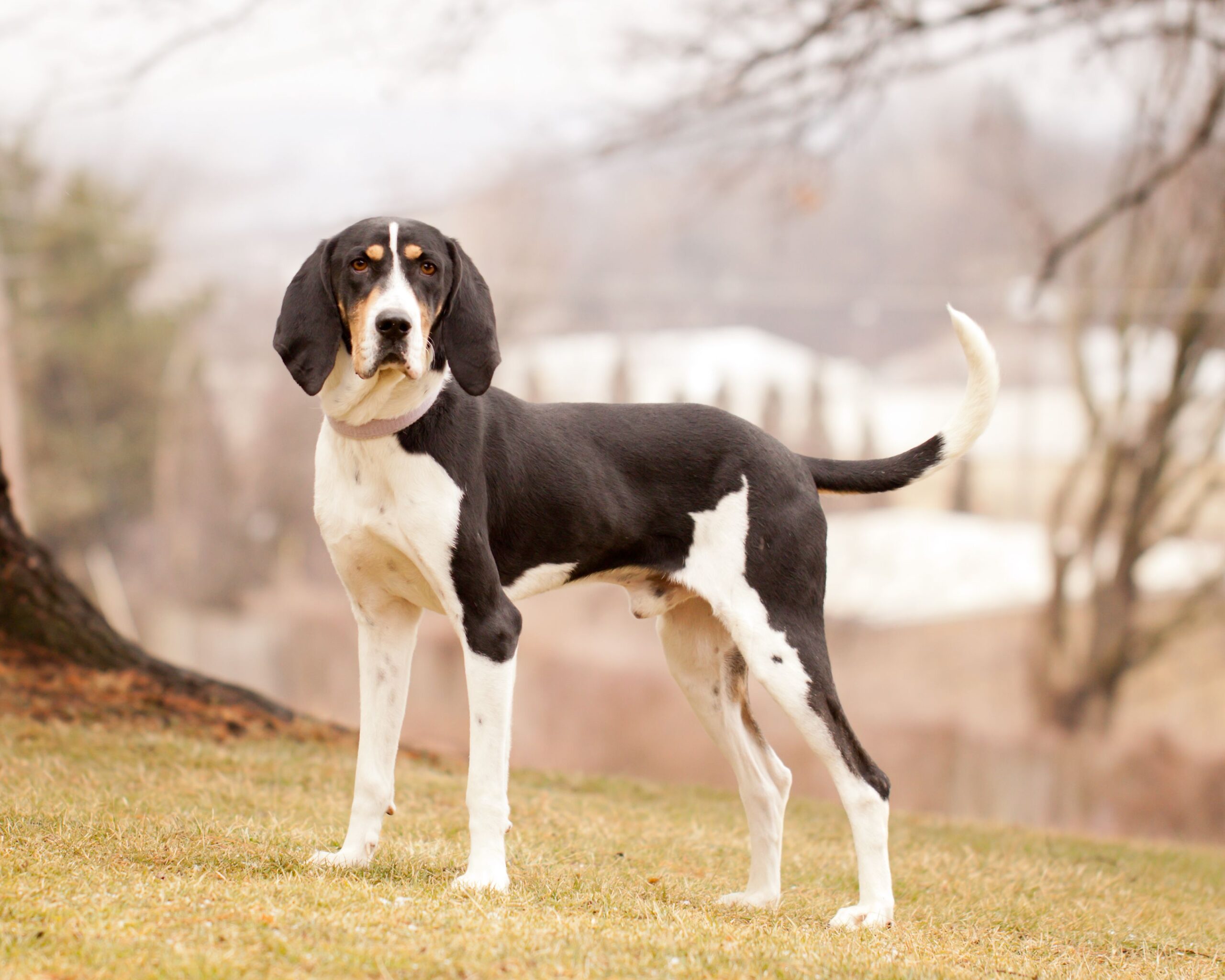My First Memorable Encounter with a Basenji
The first time I met a Basenji, I was completely confused. I was at a friend’s apartment for dinner when this elegant, small dog with a tightly curled tail and alert, fox-like ears trotted into the room. Expecting the usual barking greeting, I was surprised when the dog instead made an unusual yodeling sound—something between a chortle and a yodel that I’d never heard come from a dog before. Even more surprising was what happened next: this curious little dog jumped effortlessly onto the back of the couch, perched there like a cat surveying its domain, then proceeded to meticulously groom its paws.
“That’s Kira,” my friend explained, noticing my fascination. “She’s a Basenji—they’re called the ‘barkless dog’ because they don’t actually bark. They’re also basically half-cat in how they behave.” Over the course of the evening, I watched in amazement as Kira demonstrated these cat-like qualities—grooming herself constantly, moving with remarkable agility from furniture to furniture, and showing an independent streak that was completely different from the eager-to-please dogs I was used to. By the end of the night, I was completely captivated by this unusual breed that seemed to combine the best qualities of both dogs and cats.
If you’ve never encountered a Basenji, you’re missing out on one of the most distinctive and fascinating dog breeds in existence. With their ancient history dating back thousands of years in Central Africa, their unique vocalizations (they don’t bark, but they certainly aren’t silent!), and their cat-like behaviors, Basenjis stand apart from virtually every other type of dog.
Whether you’re considering adding one of these independent spirits to your family, fascinated by their incredible history, or simply curious about distinctive dog breeds, I’ve put together the ultimate guide to Basenjis. From their ancient African origins to what they’re actually like as companions (spoiler alert: they’re amazing but challenging!), we’ll cover everything you need to know about these remarkable “barkless dogs.” So grab your favorite beverage, get comfortable, and let’s explore the wonderful world of Basenjis!
Ancient African Heritage: The 5,000-Year History of Basenjis
To truly understand what makes Basenjis so special, we need to appreciate their extraordinary history, which stretches back thousands of years and has shaped every aspect of these remarkable animals.
Origins in Central Africa
The Basenji is one of the oldest domesticated dog breeds in the world, with evidence of dogs resembling modern Basenjis appearing in Egyptian artifacts dating back to approximately 3000 BCE. However, their true origins lie in Central Africa, particularly in the regions that are now the Democratic Republic of Congo and Sudan, where they were developed by various tribes for hunting in dense forest environments.
In their native lands, Basenjis were prized as versatile hunting companions. Their acute senses, silent hunting style, and remarkable agility made them ideal for flushing small game into nets. Indigenous peoples valued them not only for their hunting prowess but also for their alertness as watch dogs and their cleanliness as camp companions.
The name “Basenji” comes from the local language and roughly translates to “village dog” or “dog of the bush,” reflecting their integral role in traditional village life. In some regions, they were known as “the jumping up and down dog” for their habit of springing high to see over tall grass when hunting.
Discovery by the Western World
Despite their ancient heritage, Basenjis remained largely unknown to the Western world until the late 19th and early 20th centuries. Early attempts to bring the breed to England in the 1880s and 1890s were unsuccessful, as the imported dogs succumbed to diseases they had no immunity against.
The first successful importation occurred in the 1930s, when a British animal importer named Olivia Burn brought several Basenjis from the Congo. These dogs formed the foundation of the breed outside Africa. The American Kennel Club recognized the Basenji in 1943, and the breed gradually gained enthusiasts worldwide, though it has always remained relatively uncommon compared to many popular breeds.
In 1988, the Basenji gene pool was expanded through the “African Stock Project,” when dedicated breeders conducted expeditions to remote regions of Africa to find and import native Basenjis. These new bloodlines helped increase genetic diversity and improve the health of the breed, which had suffered from the limited founding population.
The “Barkless” Adaptation
One of the Basenji’s most distinctive traits – their inability to produce a typical dog bark – is believed to be an evolutionary adaptation to their hunting environment. In the dense forests of Central Africa, a barking dog would alert prey to the hunters’ presence and potentially drive game away. Instead, Basenjis developed a unique vocalization system including yodels, screams, whines, and a distinctive “baroo” sound that served their hunting role better than barking would have.
This unusual vocalization, combined with their keen senses and silent hunting style, made them perfectly adapted to work cooperatively with human hunters in thick forest environments where visibility was limited. The strong pack instincts they developed in this role are still evident in their relationships with human families today.
The Basenji Look: Elegant and Athletic
The Basenji’s appearance is truly distinctive – combining elegance, athleticism, and alertness in a compact, medium-small package that has changed remarkably little over thousands of years.
Size and Structure
Basenjis are small to medium-sized dogs with a light, graceful build that belies their considerable strength and agility. Males typically stand 17 inches at the shoulder and weigh about 24 pounds, while females are slightly smaller at 16 inches and 22 pounds.
Their overall silhouette is one of balanced proportions and elegant lines. Key physical characteristics include:
- A wrinkled forehead with alert, fox-like erect ears
- Almond-shaped eyes that are typically dark and convey an intelligent, sometimes mischievous expression
- A short, fine coat that lies flat against the body
- A tightly curled tail that arches over the back
- A square body profile with height approximately equal to length
- High-set, straight legs that give them their characteristic light, swift gait
- A deep chest providing ample lung capacity for endurance
Perhaps their most distinctive visual feature is the wrinkled forehead that gives them a perpetually curious, sometimes worried expression. These wrinkles are more pronounced in puppies and tend to appear more distinctly when the dog is alert or excited.
Basenjis move with a swift, effortless gait that’s often compared to a racehorse – high-stepping, smooth, and incredibly efficient. Their movement reflects their heritage as hunting dogs that needed to cover ground quickly through challenging terrain.
Coat and Colors
The Basenji’s short, fine coat is one of their most appreciated features for many owners. It lies flat against the body, feels almost silky to the touch, and sheds minimally compared to many breeds. This light shedding, combined with their fastidious self-grooming habits, makes them one of the cleanest and most odor-free dog breeds.
Basenjis come in several recognized colors:
- Chestnut red with white markings (the most common coloration)
- Black with white markings
- Brindle (black stripes on a chestnut background) with white markings
- Tri-color (black and chestnut with white markings)
- Black, tan, and white
All color varieties should have white feet, chest, and tail tip according to the breed standard, and many also have a white blaze on the face or collar around the neck. The white markings are thought to have served a practical purpose in their hunting heritage, making them more visible to human hunters in low-light forest conditions.
Grooming a Basenji is remarkably simple. Weekly brushing with a soft brush or grooming mitt is usually sufficient to remove loose hair and distribute skin oils. Many Basenjis supplement this with their own grooming, often spending time each day licking their coats clean much like cats do. Baths are rarely needed, as they have minimal “dog odor” and keep themselves quite clean.
Personality & Temperament: The Independent Thinker
Beyond their distinctive appearance, what truly sets Basenjis apart is their unique personality – a fascinating blend of primitive dog instincts and cat-like independence that creates a companion unlike any other breed.
The Cat-Dog Hybrid
Perhaps the most frequent comment from Basenji owners is how cat-like their dogs are. This feline comparison is earned through numerous behaviors, including:
- Fastidious self-grooming, often spending significant time cleaning their coats
- A preference for perching in elevated positions to observe their surroundings
- Independent thinking and selective listening when it comes to commands
- An aloof nature with strangers while being affectionate with their chosen people
- Graceful, agile movement and remarkable jumping ability
- A certain dignity and self-possession not commonly seen in more eager-to-please breeds
This cat-like independence doesn’t mean Basenjis are unaffectionate – quite the contrary. With their family members, most Basenjis are deeply attached and even cuddly, though typically on their own terms. They often form particularly strong bonds with one special person while maintaining friendlier but more reserved relationships with other household members.
Intelligence and Problem-Solving
Basenjis possess a distinctive type of intelligence characterized by remarkable problem-solving abilities and independent thinking. Unlike breeds developed to work closely with humans and follow directions, Basenjis were bred to think for themselves while hunting, making decisions without constant handler input.
This independent intelligence can manifest in both impressive and challenging ways. Basenjis quickly figure out how things work in their environment – including door latches, cabinet locks, refrigerator doors, and other barriers to things they want. Many owners report their Basenjis learning to open doors, climb fences, or find creative ways to access forbidden items.
Training a Basenji requires understanding that they approach learning differently than many breeds. They’re perfectly capable of learning commands and behaviors but will always consider whether compliance serves their interests. This isn’t stubbornness for its own sake but rather a practical cost-benefit analysis – a trait that served them well as hunting partners who needed to make independent decisions in the field.
The key to successful Basenji training is making it worth their while through positive reinforcement, keeping sessions short and engaging, and understanding that they may never achieve the eager, automatic obedience seen in breeds like Labrador Retrievers or Border Collies.
The Vocalizations Beyond Barking
While Basenjis are famously “barkless,” they are far from silent. Their unique vocal repertoire includes:
- The famous “baroo” or yodel – a distinctive sound often made when excited or seeking attention
- Whines of various pitches and intensities
- Growls (both playful and warning)
- Howls (particularly when left alone or hearing certain triggers like sirens)
- Various chirps, chatters, and other unique sounds
Many Basenji owners report that their dogs are quite “talkative” in their own way, using this range of vocalizations to communicate different needs and emotions. The yodel in particular can be quite loud and carries surprisingly well, sometimes startling people who aren’t familiar with the breed.
It’s worth noting that while Basenjis don’t produce a typical dog bark, some can make short, sharp sounds that somewhat resemble barking when sufficiently motivated. However, this is rare and not the sustained barking seen in most dog breeds.
Living With a Basenji: Practical Considerations
Beyond their history and personality, what’s it actually like to share your home with a Basenji? There are some unique considerations that potential owners should understand before bringing one of these special dogs home.
Exercise and Mental Stimulation
Despite their moderate size, Basenjis are athletic, energetic dogs with significant exercise needs. Most require 30-60 minutes of physical activity daily, ideally including both walks and opportunities for more vigorous play or running in a safely enclosed area.
Beyond physical exercise, mental stimulation is equally important for these intelligent dogs. Boredom is the enemy of a well-behaved Basenji and can lead to destructive behaviors as they find their own entertainment. Puzzle toys, training games, rotating toys, and interactive play all help keep their active minds engaged.
Many Basenjis enjoy activities that challenge both body and mind, including:
- Lure coursing (chasing an artificial lure, which appeals to their hunting instincts)
- Agility training
- Nose work or scent activities
- Interactive games with their owners
- Fetch (though many lose interest quickly or decide to keep the toy rather than return it)
It’s worth noting that while Basenjis need regular exercise, they typically aren’t high-endurance dogs who need hours of activity daily. Their energy tends to come in bursts – they may race around at full speed for a few minutes, then be content to relax for extended periods. This pattern fits their original hunting style, where short bursts of intense activity were followed by rest.
Escape Artists and Curious Explorers
Perhaps the most critical practical consideration for Basenji owners is containment. These clever, agile dogs are legendary escape artists with an insatiable curiosity about the world beyond their boundaries. Their problem-solving intelligence, remarkable jumping ability, and occasional climbing skills make them experts at finding ways out of yards and homes that would easily contain most other breeds.
A secure yard for a Basenji typically means:
- Fencing at least 6 feet high (some can clear 5-foot fences with ease)
- No climbable features near the fence (such as trees, woodpiles, or outdoor furniture)
- Buried fencing or concrete barriers at the base to prevent digging out
- Gates with secure latches that a clever dog can’t manipulate
- Regular inspection for any developing escape routes
Inside the home, Basenjis often require similar security measures. Many owners find it necessary to use childproof latches on cabinets, refrigerator locks, and even special doorknobs to prevent their Basenjis from accessing forbidden areas or items.
This escape tendency is related to their strong prey drive – a Basenji who spots a squirrel, rabbit, or other small animal may be completely consumed by the instinct to chase, regardless of training or the dangers of traffic. For this reason, most experienced Basenji owners never allow their dogs off-leash in unfenced areas, no matter how well-trained they seem.
Household Compatibility
Basenjis can adapt well to various living situations, including apartments (provided their exercise needs are met), though they generally prefer homes with at least some outdoor space. Their cleanliness, minimal shedding, and general lack of “dog odor” make them good indoor companions from a maintenance perspective.
When considering a Basenji, household composition is an important factor:
- Children: Basenjis can do well with respectful older children who understand their independent nature, but many are not ideal for households with very young children. Their sometimes aloof temperament and low tolerance for rough handling can make them a poor match for toddlers or very active young kids.
- Other dogs: Many Basenjis get along well with other dogs, particularly when raised together. However, some can be same-sex aggressive, especially males with other males. Their play style can be quite active and may be intimidating to more sensitive dogs.
- Cats and other pets: This is highly individual. Some Basenjis coexist peacefully with cats, especially if introduced as puppies, while others maintain a strong prey drive that makes them unsafe housemates for cats or small animals like rabbits or guinea pigs.
One oft-overlooked consideration is the Basenji’s attachment to their people. While independent in many ways, these dogs typically form strong bonds with their families and can suffer from separation anxiety if left alone for long periods. Many do best in households where someone is home much of the day or where they have canine companionship during human absences.
Health and Care: Supporting Your Basenji
Basenjis are generally healthy dogs with a typical lifespan of 12-16 years, though as with any breed, there are some specific health considerations that potential owners should be aware of.
Breed-Specific Health Considerations
Several health issues appear in the Basenji breed with some frequency:
- Fanconi Syndrome: A kidney disorder where the organ fails to reabsorb electrolytes and nutrients. A DNA test is now available to identify carriers, and careful breeding has reduced its prevalence.
- Progressive Retinal Atrophy (PRA): An inherited eye condition that can lead to blindness.
- Hypothyroidism: An underactive thyroid gland that affects metabolism.
- Persistent Pupillary Membrane (PPM): An eye condition present at birth that sometimes resolves naturally.
- Hip Dysplasia: Though less common than in many breeds, it can occur in Basenjis.
- Immunoproliferative Small Intestinal Disease (IPSID): A type of inflammatory bowel disease more common in Basenjis than other breeds.
Working with a reputable breeder who conducts appropriate health testing can significantly reduce the risk of these conditions. The Basenji Club of America provides guidelines for recommended health tests, including DNA testing for Fanconi Syndrome, eye examinations, and hip evaluations.
The Annual “Blowing Coat”
While Basenjis are often described as non-shedding, this isn’t entirely accurate. Most Basenjis “blow their coat” once annually, typically in spring or early summer. During this period, which lasts about 2-3 weeks, they shed their undercoat and can leave noticeable hair around the home.
Outside of this annual event, their shedding is minimal compared to many breeds, and their self-grooming habits help keep loose hair under control. Regular brushing with a soft bristle brush or rubber grooming tool helps remove loose hair and distributes skin oils for a healthy coat.
Nutrition and Feeding
Basenjis typically thrive on high-quality commercial dog foods formulated for active breeds. Individual nutritional needs vary based on age, activity level, and metabolism, so adjusting portions to maintain ideal body condition is important. Many Basenji owners feed twice daily rather than leaving food available all day, as the breed can be prone to weight gain if allowed to free-feed.
Some Basenjis have sensitive digestive systems and may do better on limited-ingredient diets or foods formulated for sensitive stomachs. As with any breed, any significant changes in appetite, water consumption, or elimination habits should prompt a veterinary consultation, as these can be early indicators of health issues.
Is a Basenji Right for You? Honest Assessment
After learning all about these fascinating “barkless dogs,” you might be wondering if a Basenji would fit well in your lifestyle. Let’s take an honest look at who should (and perhaps shouldn’t) consider this breed.
You Might Be a Great Basenji Owner If…
A Basenji might be right for you if:
- You appreciate an independent, intelligent dog with a mind of its own
- You’re experienced with dogs or willing to learn about the unique needs of primitive breeds
- You can provide daily exercise and mental stimulation
- You have a sense of humor and patience for a sometimes mischievous companion
- You value a clean, generally odor-free dog with minimal shedding
- You can provide secure containment, both in your yard and home
- You’re home relatively often or can arrange for company for your dog
- You enjoy problem-solving and positive training approaches
- You’re looking for a distinctive, uncommon breed with ancient heritage
Basenjis can adapt well to various household compositions, though they typically do best with experienced dog owners, couples or singles without very young children, and families with older children who understand and respect dogs.
A Different Breed Might Be Better If…
A Basenji might not be the best choice if:
- You want an easily trainable dog that eagerly obeys commands
- You have very young or rough children
- You have small pets like rabbits, hamsters, or possibly cats
- You’re away from home for extended periods regularly
- You don’t have time for daily exercise and engagement
- You can’t provide secure containment
- You prefer a dog that’s demonstratively affectionate with everyone
- You want a guard dog (while alert, most Basenjis are friendly with strangers)
- You’re a first-time dog owner looking for an “easy” breed
Finding Your Basenji
If you decide a Basenji is right for you, there are several paths to finding your new companion:
- Reputable breeders: The Basenji Club of America maintains a breeder directory. Expect a thorough interview process – good breeders want to ensure their puppies go to prepared, appropriate homes. Puppies from health-tested parents typically cost between $1,500-$2,500.
- Breed-specific rescue: BRAT (Basenji Rescue and Transport) is dedicated to rescuing and rehoming Basenjis across the United States. Adult dogs from rescue often come with the advantage of known personalities and established house manners.
- General shelters and rescues: While less common, Basenjis occasionally appear in general shelters, sometimes misidentified as mixed breeds due to their relative rarity.
Be prepared for a potential wait, especially if seeking a puppy from a reputable breeder. The breed has relatively small litters (typically 4-6 puppies), and many breeders have waiting lists. This patience is rewarded with a puppy that has received proper early socialization and comes from health-tested parents, reducing the risk of genetic issues.
Conclusion: The Enduring Appeal of the Ancient Barkless Dog
There’s something truly special about Basenjis. Perhaps it’s their ancient heritage – the fact that they look almost identical to dogs depicted in artifacts from thousands of years ago gives them a timeless quality few breeds can match. Perhaps it’s their distinctive traits – the wrinkled forehead, the tightly curled tail, the unique vocalizations in place of barking. Or perhaps it’s their fascinating personality – that remarkable blend of canine loyalty and feline independence that creates a companion unlike any other.
Living with a Basenji means embracing certain compromises – the need for secure containment, the acceptance that perfect obedience may remain elusive, the recognition that they’ll make many decisions for themselves rather than simply following instructions. But for those who connect with their special spirit, these accommodations are minor compared to the joy of sharing life with such an extraordinary companion.
Basenjis aren’t for everyone, and that’s perfectly okay. Their unique combination of intelligence, independence, and primitive instincts requires understanding and accommodation. But for those who appreciate their special qualities, these “barkless wonders” offer a relationship that’s as challenging as it is rewarding – a connection to the very origins of the human-canine partnership wrapped in a package that combines ancient wisdom with playful mischief.
As one experienced Basenji owner beautifully expressed it, “They’re not just dogs; they’re Basenjis. And once you’ve been owned by one, ordinary dogs never quite seem enough.” For the right person with the right expectations, truer words were never spoken.
